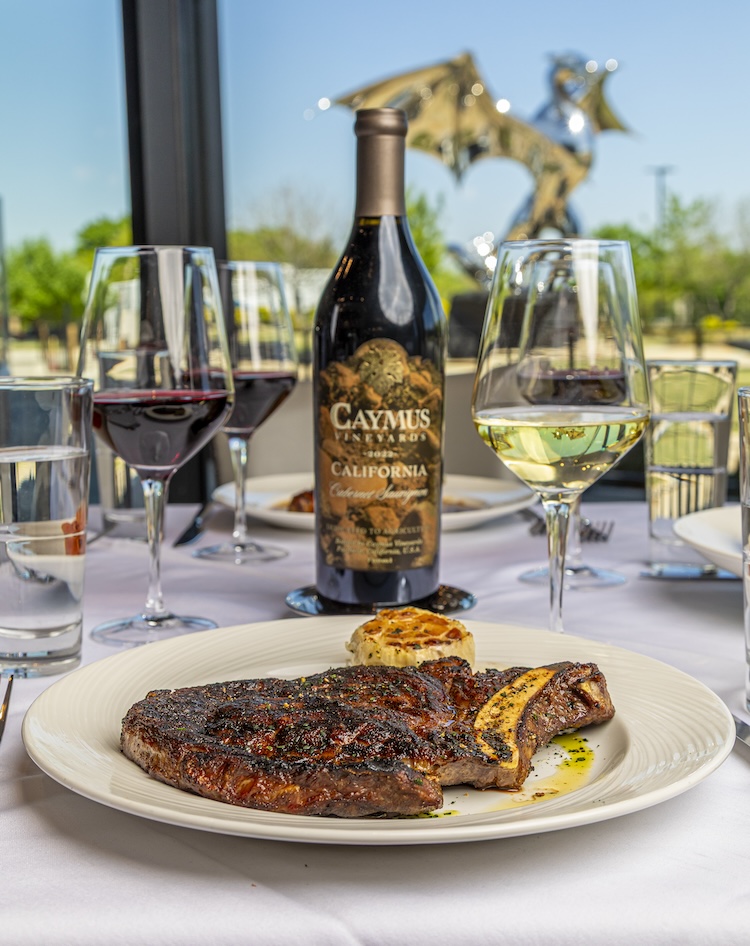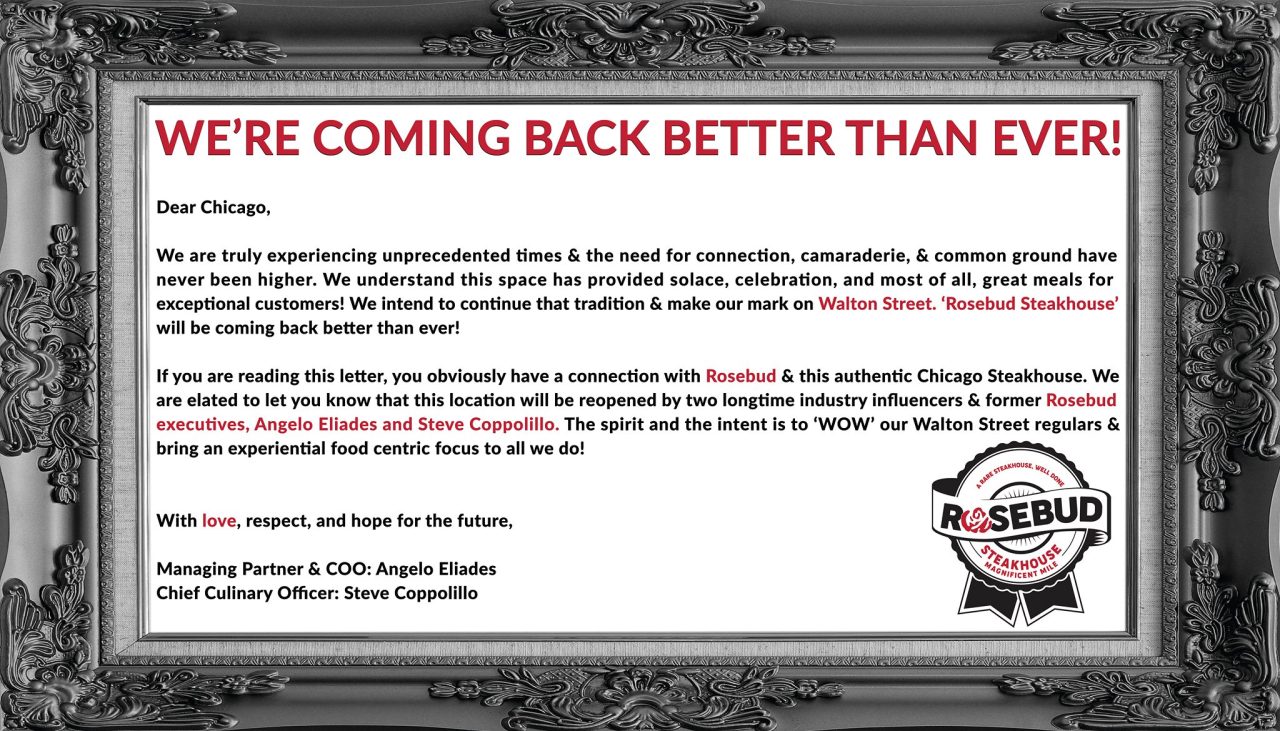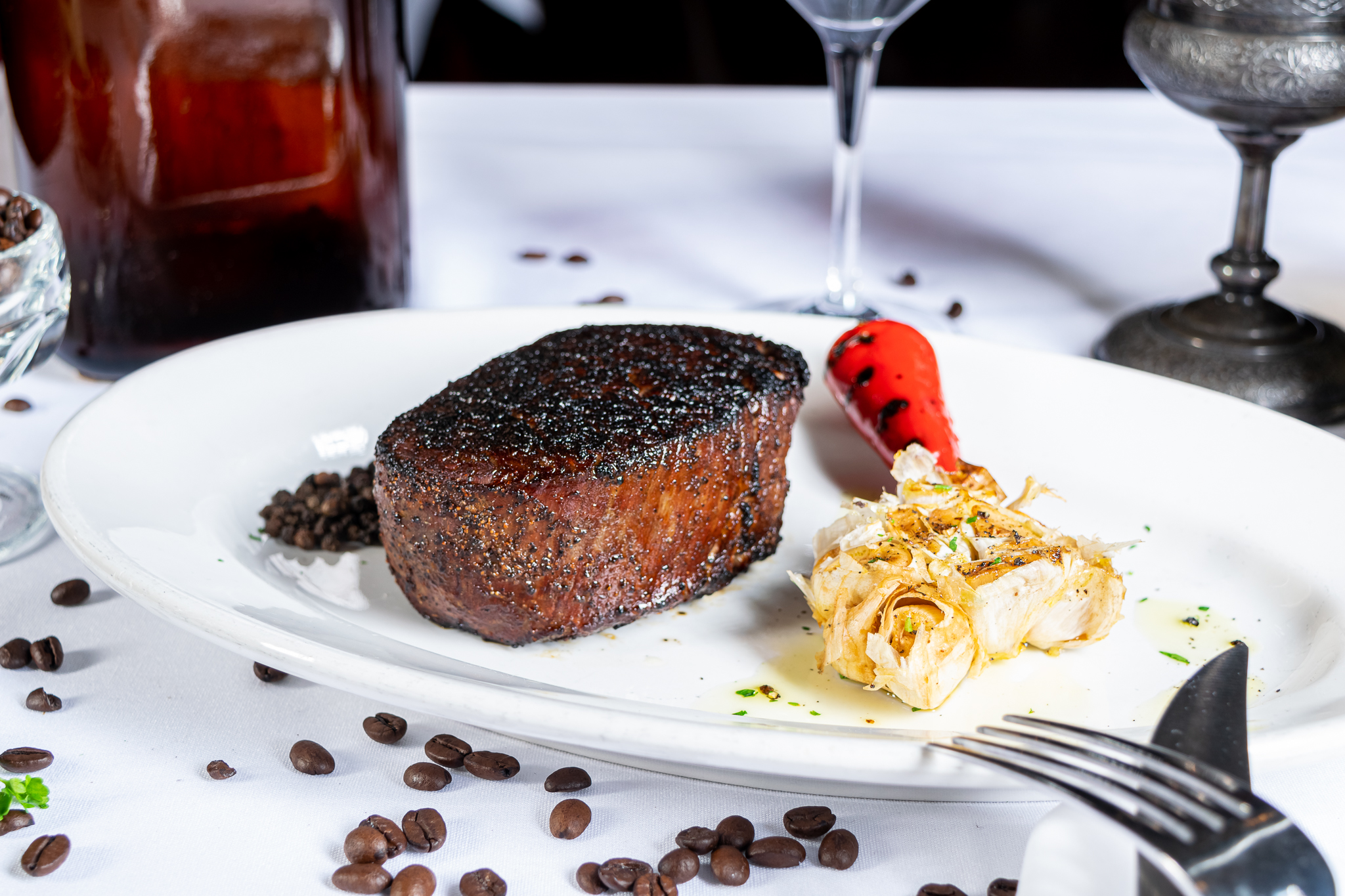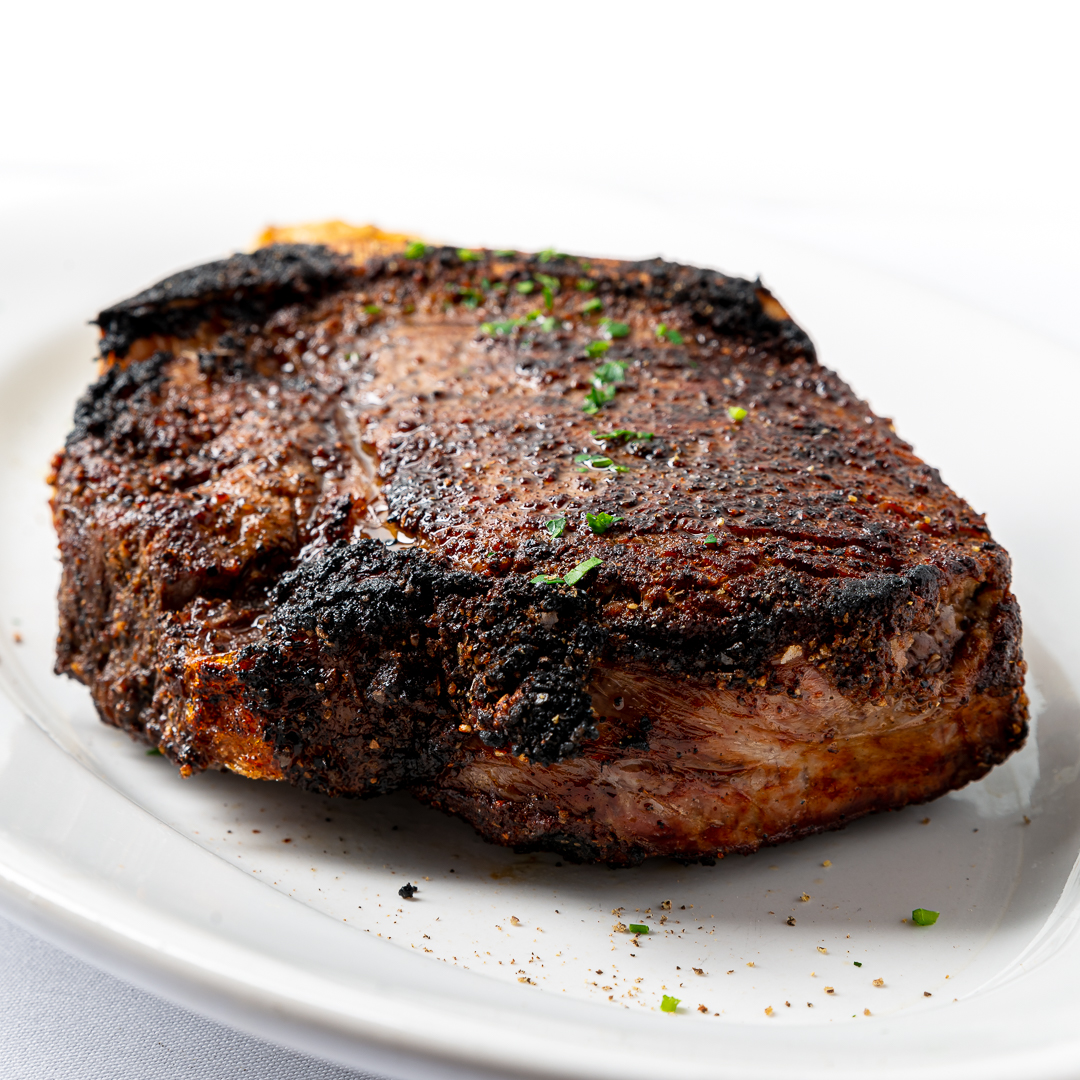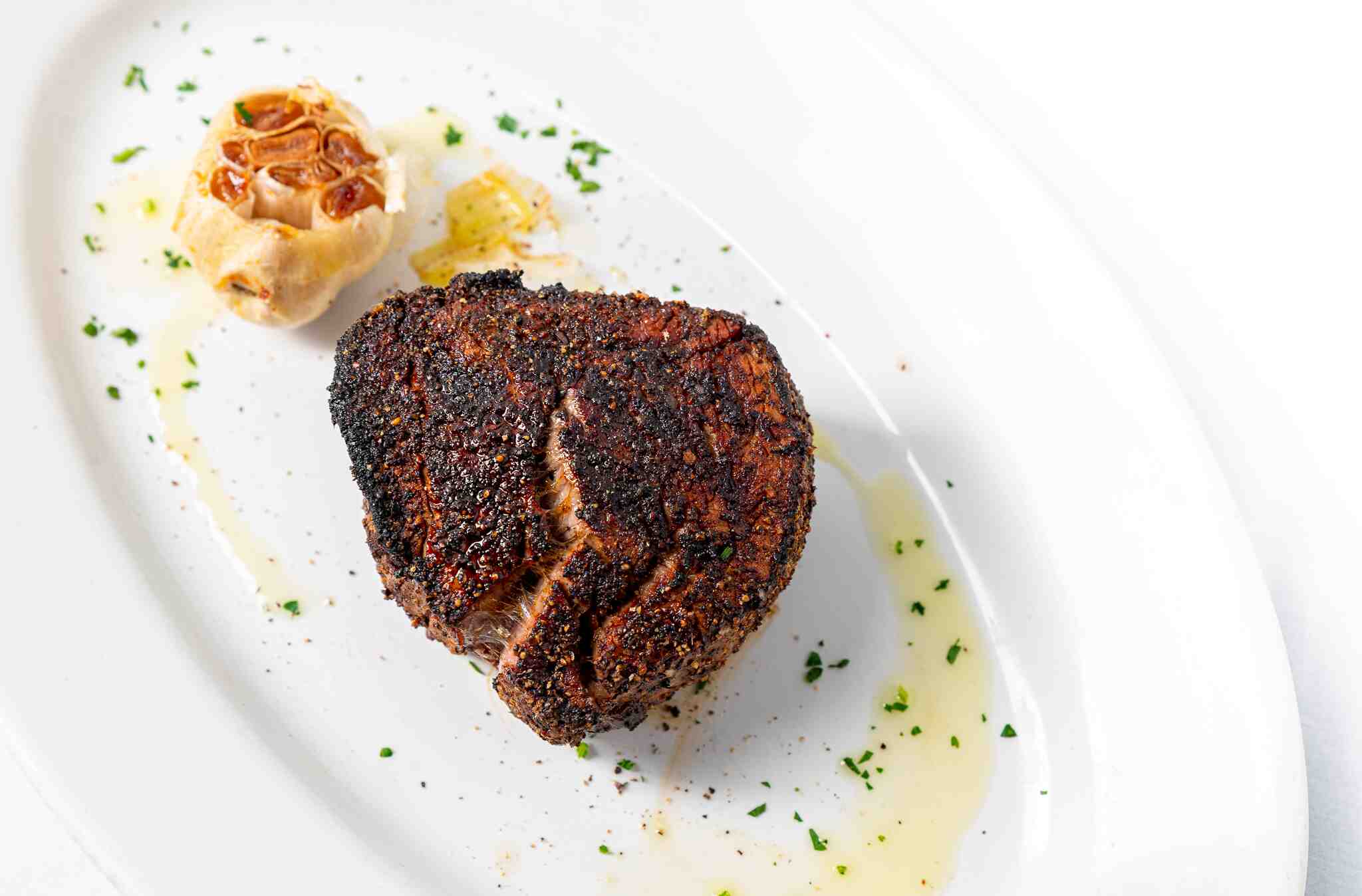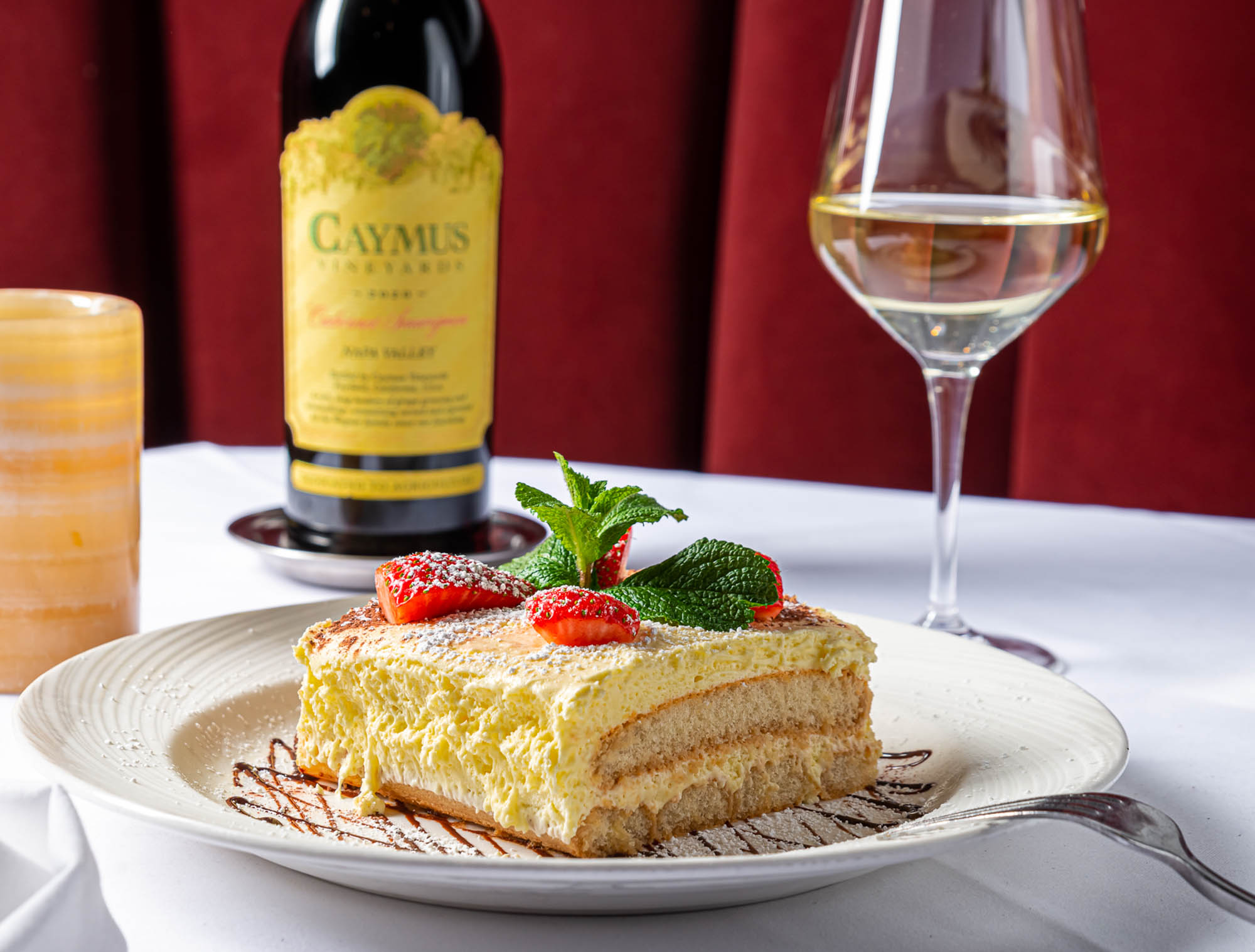Filet mignon is, for many people, the epitome of steak cuts and is known for its tenderness, akin to butter, with a mild flavor. Being the most sensitive part of beef offers it the melt-in-the-mouth feeling so difficult to match. At Rosebud Steakhouse, we offer top-shelf filet mignon, prepared to perfect those sure, single bites are rich, juicy, and forever memorable.
Really cooking filet mignon at home seems daunting, but the right techniques will easily let you replicate a restaurant-quality steak in the comfort of your kitchen. This said, we are going to take you through step-by-step on how to cook filet mignon in the oven, turning out perfectly every time.
Why Choose Filet Mignon for an Oven-Cooked Steak?
Filet mignon is considered one of the most tender cuts, which it gets from its location on the cow-the tenderloin is a muscle that does very little work. With this in mind, it is soft in texture and therefore requires very minimal marinating or elaborate planning; its natural taste can be brought out easily. Mild yet full-bodied, this cut stands out to most steak connoisseurs because subtlety in the seasonings or even classic sauces presents it.
The oven-cooking method is ideal for filet mignon because it allows control over the evenness of cooking that will give juiciness and tenderness to the steak. Unlike grilling, which may have uneven doneness, an oven provides consistent heat, affording a much larger measure of control with regard to internal temperature. Oven cooking, when combined with quickly searing on the stovetop to create a flavorful crust, helps deliver the perfect filet mignon: tender inside and with a deliciously caramelized exterior.
Preparing the Filet Mignon to Oven
Success with the oven cooking of the filet mignon will stem from proper preparation. The right cut is the starting point. Choose a filet that is at least 1.5 to 2 inches thick, and you’ll know it will cook well even as it retains juices. Rosebud Steakhouse serves only the finest, hand-cut filets, and you can achieve that right at home by choosing a well-marbled steak from a good butcher.
Take the steak out of the fridge about 30 minutes before you cook it to bring it to room temperature, allowing the food to cook more evenly. Season liberally with salt and freshly ground black pepper on both sides of the steak. Add a little drizzle of olive oil to lightly coat the filet; this will help sear it. When cooking filet mignon, simple seasonings work the best because they let the filet speak for itself.
Searing: The Most Important Thing to Achieve with the Perfect Filet Mignon Searing gives flavor to this tender cut of meat by locking in juices and creating a caramelized crust that beautifully contrasts the tenderness of the interior. Stir-fry the filet on the stovetop before tossing it into the oven for maximum flavor boost.
First, heat the heavy skillet- preferably cast-iron- at medium-high until it is hot but never smoking. Add a small amount of high smoke point oil, like avocado or vegetable oil. When this oil is wavy, place the filet mignon carefully in the pan. Sear each side for 2 to 3 minutes until you achieve a deep golden-brown crust. Make sure to sear the sides as well to seal the juices in the steak.
Cooking Filet Mignon to Your Liking
Once the filet mignon has been seared to perfection, it is time to finish it in the oven. The secret to achieving your perfect doneness, whether it be rare, medium rare, or well-done, relies on proper oven temperature and using a very accurate internal meat thermometer.
Here are the oven temperatures and cooking times, depending on several degrees of doneness:
Rare-120°-125° F internal temperature: Preheat the oven at 400° F. Cook for about 4 to 6 minutes, depending on how thick your filet is.
Medium Rare-130°-135° F internal temperature: Preheat oven to 400° F. Cook for 6 to 8 minutes. This will be the recommended degree of doneness for your filet mignon, for it retains the tenderness and juiciness of the steak.
Medium – Rare: 140-145°F internal. Heat oven to 400°F. Bake 8 to 10 minutes for a filet that is firm, yet still tender.
Well-Done: 150-155°F internal. Heat oven to 400°F. Bake for 10-12 minutes. This will slightly dry out the meat.
Use a meat thermometer to check the internal temperature in the thickest part of the steak. Remove the filet from the oven when it’s 5°F below your desired temperature, as it will continue cooking while it rests. This method ensures you don’t overcook your steak. For any questions or to make a reservation, feel free to contact us.
Resting Your Filet Mignon to Maximize Flavor
It is allowing the filet mignon to rest after cooking that helps retain its juices and amplifies the flavors. When meat cooks, juices rise to the surface. The second you cut into your steak, after having cooked it just right, all of those delicious juices will spill out and leave the meat dry. Resting allows the juices to redistribute throughout the steak and with every bite to be juicy and full of flavor.
To rest a filet mignon, once it’s out of the oven, let it sit there for about 5-10 minutes. Just cover the steak with aluminum foil loosely while resting so it stays hot. This short time will make the greatest difference in overall texture and taste in your steak.
Add Extra Flavor to Your Filet with Compound Butter or Sauce
You can always finish the filet mignon with a flavored compound butter or even a classic steak sauce if you want to indulge yourself even more. One of the easiest yet most sophisticated ways to dress up natural filet mignon flavors would be to top the tenderloin with a garlic herb butter. To make it, mix softened butter with finely chopped garlic, fresh herbs such as parsley, thyme, or rosemary, and a pinch of salt. Place a pat of this butter atop hot steak and serve, melting to form a rich and savory coating.
Indulge a little more with the classic sauces like béarnaise, rich and buttery in emulsion with herbs, or a red wine reduction made with the pan drippings, beef stock, and a splash of wine. Whichever you choose, it will add some sophistication to your dish and escalate your home-cooked filet mignon to the next level.
Pairing Filet Mignon with Side Dishes and Wine
The rich, delicate flavor of filet mignon pairs so well with so many side dishes. We recommend pairing it in classic accompaniment with creamy mashed potatoes, a roasted vegetable, or a simple crisp green salad. These sides are balanced with the richness of the steak without overpowering it. Roasted asparagus or even brussels sprouts add up to a nice contrast in texture with a bit of bitterness that will balance with the richness of the butter on the tenderness of the filet.
Wine is no exception when it comes to pairing something as fine as filet mignon. Here at Rosebud Steakhouse, we proudly have a voluminous wine list to satisfy each taste. When it comes to filet mignon, it calls for a full-bodied red wine. A rich cabernet sauvignon or a smooth pinot noir will be a perfect accompaniment, as the bold flavors and tannins complement and accentuate the natural juiciness of the steak. Or if you prefer white wine, a buttery chardonnay will also complement the tender filet nicely.
Why Rosebud Steakhouse’s Filet Mignon is Unmatched
At Rosebud Steakhouse, we take great pride in our decades-long history of serving only the best, highest-quality steaks. And that certainly does not exclude our filet mignon. Sourced from the finest cuts of beef and aged with great care to ensure maximum tenderness and flavor, Rosebud’s filet mignon is a cut above the rest. Whether you are dining in our iconic Magnificent Mile location or visiting our newest locations in Centennial Village, Uptown 500, or Southlake, TX, rest assured that every steak is served with the same uncompromising quality and attention to detail.
Every filet mignon at Rosebud will be cooked to perfection, so with each delicate bite, it is juicy, tender, and full of flavor. Our chefs prepare the perfect crust by using classic cooking techniques that will cook the filet to your preferred doneness while retaining the natural juices inside the meat. Simply seasoned with a touch of salt and pepper or lavishly served with a rich béarnaise sauce, filet mignon at Rosebud is sure to be one of those dishes that will linger on in memory long afterward.
Visit us at one of our locations today and savor the flavor of our signature filet mignon dishes, along with a wine that pairs just right from our extensive list. Make reservations today and see why Rosebud Steakhouse remains the bar against which all other steakhouses are compared to.
Conclusion
Cooking the perfect filet mignon in the oven does not necessarily be intimidating. If you follow these steps, such as preparation of the steak, searing for flavor crust, cooking to the right doneness, and letting it rest, you might just experience that restaurant-quality steak right in your home. And topped with extra added compound butter or rich sauce and paired appropriately with side dishes and wine, homemade filet mignon is surely going to impress your family and friends.
If you’d rather leave it to the pros, Rosebud Steakhouse stands ready. Whether it is our signature filet mignon or one of our many other prime steaks you’re in the mood for, we promise a memorable dining experience.

